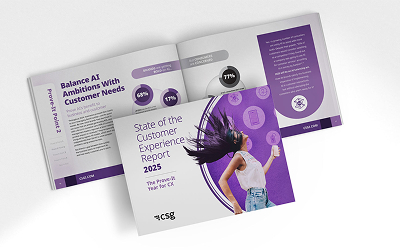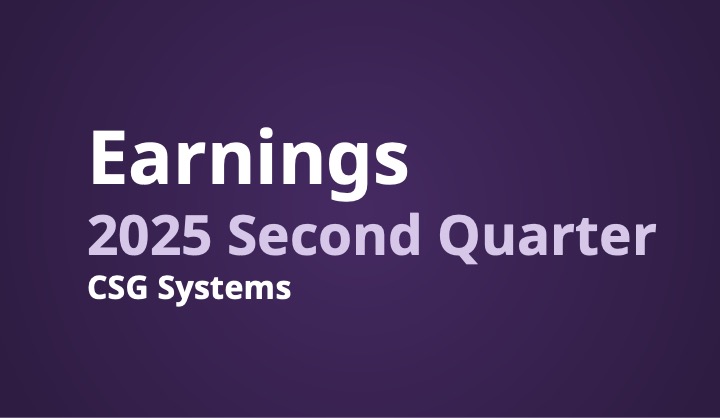You work hard to win your customers. You have great early conversations, create a connection, find common interests and goals and slowly build up to get that coveted “yes.” But months later, things get quiet. They don’t engage like they used to. And then—boom—they’re gone. Ghosted without a word.
It’s like dating someone who walks out the door without warning… and you’re left scrambling, sending “miss you” messages, making grand gestures and wondering what went wrong.
You’re not alone. Many companies wait until customers are halfway out the door—or already gone—before trying to win them back with discounts or freebies. These reactive retention tactics can work, but they’re costly and less effective.
The Breakup You Never Saw Coming
If you’re not constantly working on building the relationship, then you’re actively neglecting it.
Many companies aren’t doing enough to truly understand and keep their customers happy. There’s a delicate balance between acquiring new customers and maintaining a strong relationship with your existing ones for revenue generation. In fact, the world’s most successful growth companies generate the majority (80%) of their value by tapping into new revenue streams from their existing customer base, according to McKinsey. A Forbes Tech Council contributor agrees, stating “the winners in 2025 will be the companies that nurture and grow relationships with existing customers the best rather than those that attract the most new buyers.”
Maximizing the value of your existing customers means keeping them satisfied. While providing proactive customer care is crucial, both growth and retention strategies play a vital role in maintaining customer loyalty. This can be done through proactive or reactive strategies like promoting product or service features, unique or tailored offers, and loyalty programs.
Let’s dive into the difference between these two strategies.
Reactive Retention Offers: Win That Customer Back!
In a perfect world, you could always predict which customers were likely to cancel services or switch brands and persuade them to stay by offering the right incentives upfront. But we live in the real world where customers will slip through the cracks, and you will need to win them back. That’s where reactive retention and customer win-back offers come in.
These offers are an attempt to keep a customer after they’ve expressed their intention to cancel—or have already canceled their service. “Win-back” efforts, seeking to re-acquire customers just after they have left the business, are a reactive initiative. Having an effective win-back strategy is important, since some customers ghost a brand without any warning. One survey found that 56% of customers just leave a business without complaining about a negative customer service experience.
Reactive retention offers are often:
- Triggered by customer action: The offer is presented in response to a specific customer action, such as requesting to cancel (or canceling) a subscription or service.
- A “last ditch effort”: A reactive retention offer is often a final attempt to convince the customer to stay before they churn, while customer win-back is an offer to convince the customer to return to your business.
- Based on customer segments: Since they’re often highly time sensitive, reactive offers are less personalized than proactive ones—though ideally, they should still be relevant to the individual customer’s situation.
- More costly: Once a customer has made up their mind to take their business elsewhere, it’s generally going to take a deeper discount or more valuable offer to convince them to stay.
Examples of Reactive Retention Offers
Free upgrades
Offer customers a better product or service:
- Faster download/upload speeds or a greater data allowance
- Increased insurance coverage limits
- Lower insurance policy deductible
- Better interest rates for bank customers (higher interest rate on savings accounts or a lower interest rate on loans)
- Credit card or checking/savings account with more features, benefits and perks (e.g., credit cards that offer cashback, airline miles or points; a premium checking account with no ATM fees)
- Higher-tier retail subscription (such as more meals included in your meal kit)
Discounts
Extend a discount or special promotion to a customer who is canceling their service or subscription or closing a bank account. Examples might include:
- Internet, mobile or cable plan discounts
- Fee waivers: waive monthly bank account maintenance fees, overdraft fees, or other service charges
- Insurance premium discounts for long-term policy holders
- Future claim forgiveness: offer to waive the deductible on a future claim if the customer renews their policy
- Competitive repricing: adjust insurance premiums to match or beat competitors’ offers.
Freebies
Depending on the customer’s value and usage history, extend:
- A free trial of a streaming service, premium channel or package (sports package)
- A free month of service if they agree to renew their contract
- Free value-added services such as:
- Parental controls (for website and streaming content and time limits)
- Annual financial review sessions
- Priority support
- Smart home devices and 24/7 emergency response
- Roadside assistance
- Identity theft protection
What’s the Most Effective Reactive Retention Offer?
According to a survey of U.S. consumers, 51% of respondents said they weren’t interested in staying with a company, despite its efforts to retain them. However, some customers respond positively to reactive retention offers that provide something of value. Across industries, upgrade offers are most effective at preventing churn, followed by discounts and then freebies.
Percent of customers who said they would have stayed if they were offered each type of incentive:
- Telecom
- Upgrade Offers: 41%
- Discounts: 40%
- Freebies: 31%
- Insurance
- Upgrade Offers: 49%
- Discounts: 36%
- Freebies: 25%
- Across Industries
- Upgrade Offers: 40%
- Discounts: 36%
- Freebies: 31%
While it’s important to make effective reactive retention offers, you can do a lot more to reduce customer churn. It’s like salvaging a relationship on the back of a romantic getaway, sprucing up your appearance or buying expensive gifts—it’s better if you don’t have to. That’s where proactive retention comes in.
From Desperate Texts to Devoted Loyalty
You don’t have to chase your relationship after the breakup. You can keep it strong, so it doesn’t fade. Be present, perceptive, curious, understanding, interested, dedicated, supportive and always ON.
It’s the same with customers. Acting before they intend to cancel service or stop using your brand is more effective—and cost-efficient—than trying to win them back.
A proactive retention offer is an incentive or benefit presented to a customer before they express intent to leave, encouraging them to stay and continue their relationship with your brand. This approach requires anticipating the potential to churn and taking preemptive steps to strengthen customer loyalty and feature adoption by offering something valuable upfront. A recent study by Merkle suggests that offers are the most important way brands can interact with customers.
A proactive retention approach is often:
- Predictive. Predictive analytics identify customers who are at high risk of churning based on:
- Declining feature or benefit usage (such as dropping value-added subscriptions or credit card partner benefits)
- Negative feedback (complaining about a poor insurance claims experience or customer service encounter)
- Upcoming promotional credit expiration
- Changes in customer behavior
- Switching to a less expensive internet or mobile plan
- Canceling lines on the account
- Making late payments
- Not scheduling annual wellness exams or follow-up visits
- Purchasing items less frequently
- Reviewing alternative offers, plans, bundles
- Personalized. Proactive retention offers are tailored to the individual customer’s needs and preferences. Personalization based on customers’ unique behavior makes the offer more relevant and appealing, increasing the likelihood they’ll stay with the brand or renew their subscription. Nearly three in four consumers are more likely to purchase from a brand that delivers personalized experiences– and they spend 37% more with that brand.
The Plan
- Know the signs. Use predictive analytics to spot the behaviors (across all interactions) that signal disengagement—before it’s too late.
- Act with care, not panic. Deliver personalized, timely offers that matter to your customer before they even consider leaving.
- Be intentional. Offer real value that shows you know them, remember them, and want to grow with them—whether it’s a tailored upgrade, a loyalty perk, a relevant benefit or even contextual education and insights.
- Use the right tools. Platforms like CSG Xponent turn disconnected data into relationship-building gold: real-time customer insights, journey orchestration and personalized communications that meet your customer where they are.
Deliver Targeted Retention Offers With CSG Xponent
CSG Xponent is a customer experience platform that connects your systems, anticipating customers’ needs and delivering the right message at the right time, in the right channel to build loyalty and prevent churn. Xponent includes:
Analytics and profiling
Customer journey analytics tracks every interaction with your brand, helping you understand and predict customer behavior. By measuring customer intent indicators such as intent to purchase or cancel and observed product preferences, journey analytics identifies customers who are likely to churn—and the offers that may persuade them to stay. For example, Xponent determines which telecom customers are price sensitive and most likely to churn when their introductory promotion for a premium channel ends.
Journey orchestration
Powered by a decisioning engine, Xponent provides next-best-action recommendations based on real-time customer behavior and business rules and delivers that action. Xponent determines next best actions based on:
Churn propensity. Prioritize communication and send targeted communications (such as better offers) based on each customer’s likelihood to churn.
Profitability. Send different communications based on the margin available for each customer, with options ranging from higher offers and credits down to no treatment or intervention.
Price sensitivity. Tailor the frequency and content of messages based on each customer’s price sensitivity. For example, a price-sensitive customer might receive an offer to continue using the premium channel at a discounted price for three months, while a customer who is insensitive to price fluctuations wouldn’t receive any communication when the introductory promotion expires.
Omnichannel communications
Xponent determines what channel to use for retention offers to get the fastest response from each customer. The system suppresses communications regarding upgrade offers while the customer is experiencing an internet outage.
Keep the Spark Alive (and the Love Flowing)
When you build loyalty like you build a relationship—with consistency, attention and care—you avoid the churn and the panic. You keep customers happy, engaged and committed.
And the results speak for themselves:
- Greater customer loyalty
- Higher lifetime value
- Lower retention costs
- More advocates who sing your praises
Discover CSG Xponent
Proactive retention strategies can future-proof your CX—and your revenue.











